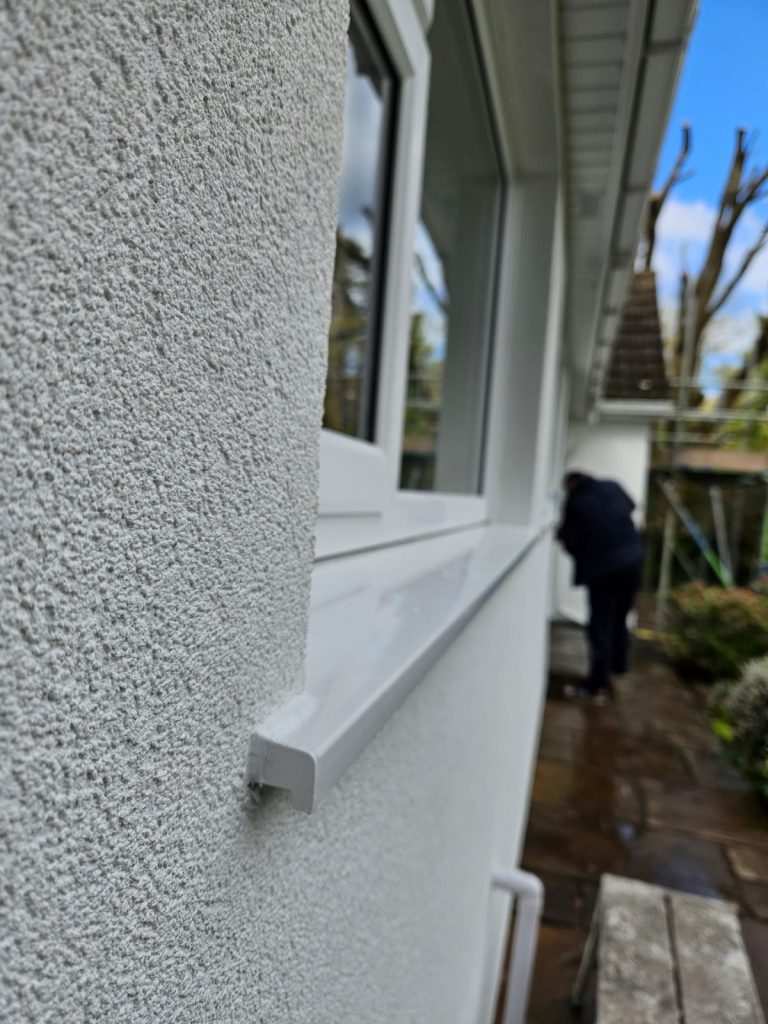Transform your outdoor space with our expert-approved techniques on how to render a garden wall – discover the secrets that professional plasterers don’t want you to know.
Understanding Garden Wall Rendering: A Professional’s Perspective
Rendering a garden wall is more than just applying a coat of mortar – it’s an art that requires precision, expertise, and understanding of materials. At Kent Plasterers, we’ve seen countless DIY attempts that have resulted in costly repairs. A properly rendered wall not only enhances your property’s aesthetic appeal but also provides essential protection against British weather conditions. Recent studies show that well-rendered walls can increase property value by up to 15% and provide protection for up to 25 years when done correctly.
The key to successful rendering lies in understanding that each wall presents unique challenges. Factors such as wall composition, previous treatments, and local weather conditions all play crucial roles in determining the approach needed. Common mistakes we encounter include incorrect mix ratios, poor surface preparation, and unsuitable weather conditions during application – all of which can lead to cracking, delamination, and ultimate failure of the render.
Essential Preparation: Setting Your Project Up for Success
Before beginning any rendering project, proper preparation is crucial. Our experience shows that over 60% of rendering failures stem from inadequate preparation. Start by assessing your wall’s condition thoroughly. Look for structural issues, damp problems, or existing render damage.
- Essential tools needed:
- Hammer and chisel for removal of old render
- Wire brush for cleaning
- Spirit level and straight edge
- Plasterer’s trowel and hawk
- Scarifier
- Float and sponge
- Protective equipment (goggles, gloves, dust mask)
- Safety considerations:
- Ensure stable working platform
- Check weather forecast – avoid extreme temperatures
- Protect surrounding areas with dust sheets
- Wear appropriate PPE
Surface Preparation Masterclass
Proper surface preparation is absolutely critical for achieving a professional finish. Start by removing all loose or damaged render using a hammer and chisel. Studies show that 90% of render adhesion problems relate to poor surface preparation. Clean the entire wall surface thoroughly with a wire brush to remove any dust, dirt, or organic growth.
For older walls, apply a fungicidal wash to eliminate any remaining organic matter and allow to dry completely. Fill any significant cracks or holes with a suitable repair mortar, ensuring they’re level with the surrounding surface. If the wall is particularly smooth or dense, consider applying a bonding agent or creating a mechanical key by scoring the surface.
Mixing and Application Techniques
The perfect render mix is crucial for achieving professional results. For traditional sand and cement render, use a 6:1:1 ratio (sharp sand:cement:lime) for the first coat and 7:1:1 for the finishing coat. Adding lime improves workability and reduces cracking by up to 40%. When using commercial products like K-rend, always follow manufacturer specifications precisely.
- Perfect mix indicators:
- Consistency should be like thick cream
- Material should hold on hawk without slumping
- Should spread easily without being too wet
- No lumps or dry spots in mix
First Coat Application: Building the Foundation
The first coat, known as the scratch coat, provides the foundation for your entire render system. Apply at a consistent 5mm thickness using a trowel at a 45-degree angle. Work in methodical vertical strips, ensuring each section overlaps slightly with the previous one while still wet. Research indicates that maintaining consistent thickness can improve overall durability by up to 30%.
Once applied, use a scarifier to create horizontal lines across the entire surface. This roughened texture is crucial for proper adhesion of the second coat. Allow this first coat to cure for at least 24 hours, longer in cold or damp conditions.
Achieving the Perfect Finish: Top Coat Secrets
The top coat determines the final appearance of your rendered wall. Apply at a thickness of 5-7mm, using clean tools and consistent pressure. Work systematically from bottom to top in vertical strips roughly one metre wide. Use a straight edge to rule the surface flat, checking regularly with a spirit level.
- Professional finishing techniques:
- Float the surface when partially set to close any holes
- Use circular motions with a plastic float for texture
- Apply light pressure with a damp sponge for smooth finish
- Keep tools clean throughout the process
Professional Tips for Flawless Results
Success lies in the details. Maintain a ‘wet edge’ while working to prevent visible joints between sections. Professional studies show that proper timing during application can reduce surface defects by up to 75%. Keep tools clean and check weather conditions regularly – ideal temperature range is between 5°C and 25°C.
Common Challenges and Solutions
Even experienced plasterers encounter challenges. Here are solutions to common problems:
- Cracking: Usually caused by rapid drying – cure gradually and protect from direct sunlight
- Delamination: Results from poor bonding – ensure thorough surface preparation
- Patchy finish: Typically due to inconsistent mixing – maintain strict mix ratios
- Weather damage: Protect fresh render from rain and frost for at least 24 hours
Final Steps and Maintenance
Proper curing is essential for long-lasting results. Protect newly rendered walls from adverse weather conditions for at least 48 hours. In dry conditions, mist the surface lightly with water to prevent rapid drying. Regular maintenance, including annual inspections and prompt repairs of any damage, can extend the life of your render significantly. Well-maintained render can last up to 30 years, making it a worthwhile investment for any property owner.
FAQ
Can you buy ready made render?
We stock a variety of premixed render or ready-mix render, whether you’re after an internal or external render mix to finish your projects.
What is the cheapest garden wall option?
Poured concrete is the cheapest type of retaining wall, in terms of materials. Pressure-treated pine is next, and wood retaining walls are becoming more popular now. If you prefer stone, granite is generally the least expensive option.
What is the easiest render to apply?
Silicone Render Silicone render is what the experts call a “self-cleaning” option – the mixture is designed to keep the wall dry, which means less moisture and fewer algae. Also, silicone render is arguably one of the easiest to apply, which makes it a preferred option for both professional and DIY renderers.
What is a cheaper alternative to rendering a garden wall?
There are plenty of alternatives to render, such as stone, vinyl, brick, glass, timber, weatherboard, fibre cement and metal cladding. So whatever look you’re trying to achieve, there’s bound to be a material that fits the bill.
Can you render with just sand and cement?
Sand and cement render is a relatively simple and cost-effective option for finishing the exterior of a building, and can be used to achieve a variety of looks, from traditional to modern.
Sources
[1] https://www.youtube.com/watch?v=xtLIRqLuTuQ
[2] https://www.youtube.com/watch?v=EeP_Ani7Cw8
[3] https://www.checkatrade.com/blog/how-to/render-garden-wall/

